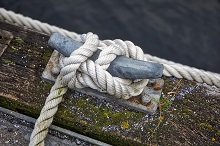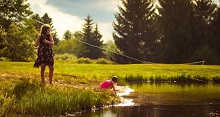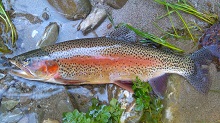Asian Carp: Debate
Canadian Angling.com (July 24, 2011). There is a debate among scientists, environmental groups, researchers and governments on the long term environmental ramifications of the Asian Carp invading the Great Lakes. At the present time most of the focus has been on the Chicago canal’s electric fence where they are trying to hold back the Asian Carp from entering Lake Michigan. There are however many other areas where they may be able to enter and get a foothold into the Great Lakes. Researchers have found 13 other areas where floods and wetlands may allow entry. One location is Indiana’s Wabash River which is closer geographically to Lake Erie than the Asian Carp are to Lake Michigan.
The Asian Carp are an invasive species that, at the present time, have spread through the Mississippi River causing detrimental effects on the native fish species. The common carp was introduced to North America in 1851 and used primarily as a baitfish for sport fishing. There are subspecies of carp that the researchers are concerned with, the silver, black, bighead and grass carp. Bighead and silver carp feed by filtering plankton from the water. The extremely high abundance of bighead and silver carp has caused great concern because of the potential for competition with native species for food and living space. Because of their filter-feeding habits, they are difficult to capture by normal angling methods. They are also prolific spawners, laying 200,000 eggs each year.
In Canada, the federal Department of Fisheries and Oceans has evaluated the risk of Asian carp invading Canadian waters, particularly the Great Lakes, either by introduction from the Mississippi or through the market in live carp. A few bighead carp and grass carp have been captured in Canada’s portions of the Great Lakes, but no Asian carp (other than common carp, an originally Eurasian species) is known to be established in Canada at this time.
The big debate is on whether the Asian Carp could survive and spawn in the Great Lakes. Duane Chapman, a leading Asian carp expert, said the fish probably could survive in all the Great Lakes, including cold Superior, because they feed in the top layers of water, where the temperatures are warmer. But spawning might not happen in all of them. What is unique about their method of spawning is that the fish lays its eggs in fast running rivers and the eggs tumble down the river as the embryos develop. This usually requires 60 miles of river for the eggs to hatch.
The issue is that researchers can not agree to is the long term effects that the Asia Carp will have on the Great Lakes ecosystem. Some believe that it will be devastating while others don’t believe that they will be able to survive in the cool Great Lakes. Let’s look at both sides of the debate.
Jerry Rasmussen (former U.S. Fish and Wildlife biologist), sounded the warning back in the late 1990’s. He and coworkers started finding the fish in the rivers they worked in. He attended meetings and told of the imminent danger to the Great Lakes, as the fish continued to be found further north approaching the lakes. He said “I was trying to get people to be concerned.” To this day he still believes that they will take over the Great Lakes.
Now, here is the problem, no all experts agree with him.
Some experts disagree with this believe, saying that the conditions of the Great Lakes do not support the Asian Carps survival long term. They state that there are insufficient food sources, because the zebra mussel has eaten most of the plankton in the Great Lakes, that the temperatures are too cold for them to survive the winters, and there are not enough long warm fast rivers where they can spawn.
Meanwhile we have other scientists that point out that the bighead and silver carp can survive in similar range of climates and conditions that are presently found in the Great Lakes. It is important to note that these fish now have colonized and are reproducing in Asia, Russia and the Mississippi River Basin. Then there are others that believe that the truth is somewhere between the two opposing points.
Duane Chapman (U.S. Geological Survey scientist in Missouri ) stated; “It’s possible they may never reach high densities in the Great Lakes, and it won’t be an overnight thing — it could take 30 or 40 years.” He continued to point out that; “You can never tell what an organism is going to do in a totally new environment until that fish is actually here.”
John Dettmers (Great Lakes Fishery Commission biologist) stated that; “There is high uncertainty and conflicting information.”
Konrad Dabrowski, (professor and director of aquaculture at Ohio State University) stated; “Asian carps pose no threat to the Great Lakes,” because of the old environment lack of spawning area. He believes that in Lake Erie the fish would only grow (>59F temperature) for 6 months and only two months in colder Lake Superior. “It’s highly improbable that spawning will occur,” Dabrowski said, pointing out that some Asian Carp have invaded European lakes and river and have never reproduced. .
Gerald Smith (a retired University of Michigan professor of evolutionary ecology and author of “Guide to Great Lakes Fishes,” also believes that they won’t survive stating that: “Ninety-nine percent of the Great Lakes are too cold for these fish to succeed.”
David Jude (larval fish expert at U-M) doesn’t believe they will survive for many reasons also but he noted that sometimes scientists are wrong. He pointed out that there are lots of examples, such as the pink salmon. It is a saltwater fish, that was placed into a sewer in Thunder Bay, Ontario and that they believed it wouldn’t survive in fresh water. However within 20 years they had populated all five of the Great Lakes. He pointed out; “that could well be the case with Asian carp, they may do well on the food that’s here and find places to spawn we never thought of.”
There was a study from China in 2007 that found that the fish can live in temperatures ranging from 39 to 82F and spawn in rivers that have a temperature range of 64 to 86F. Chapman noted that at 66F the eggs developed normally in his laboratory. These temperatures are within the range of the Great Lakes. He believes that they can probably survive in any of the Great Lakes because they feed in the top few meters of the lake.
At the present time, there are a group of scientists researching whether these carp can survive and reproduce, with the results within the next year. Some of their findings have already being published. At first scientists believed that the eggs required 60 miles to develop as they floated down the river but they found that they could develop and swim in larvae form after 30 miles of river.
As information and knowledge increases, there will be a better understanding on the potential damage these fish can do to the ecosystems. It is very important to note that while any species have certain tolerance levels, any species can and will adapt to their environment after a period of time and flourish….
Wayne Sheridan for Canadian Angling.com



